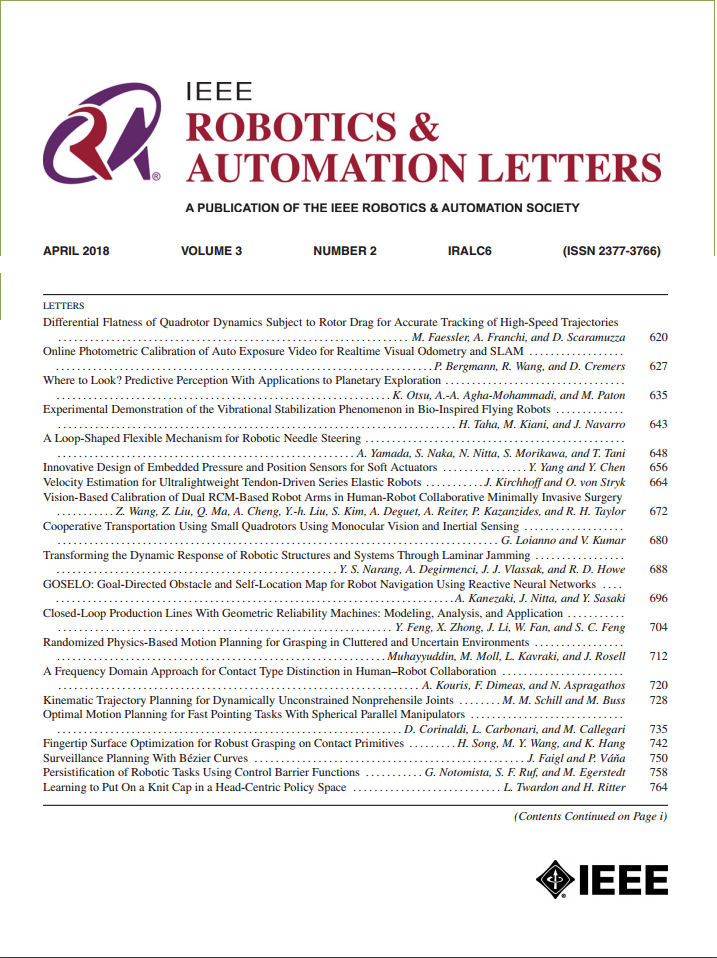具有空间感知的路径策略学习:多产品配送中带时间窗口的多机器人路径选择的一种基于距离的注意机制
IF 5.3
2区 计算机科学
Q2 ROBOTICS
引用次数: 0
摘要
基于注意机制的深度强化学习(DRL)方法在自动驾驶汽车路径问题(VRP)等组合优化问题中显示出了高效和有效性。然而,现实世界的路由问题通常涉及复杂的约束和多个目标,引入了大量的复杂性。现有的注意机制统一对待服务区域内的所有点,忽略了点之间的相对空间关系,导致在多目标路由问题的大解空间内进行无导向探索,导致模型难以有效平衡多个目标的潜在分心困境。为了解决这一问题,我们提出了一种基于距离的注意机制(DBAM),该机制通过将相对空间关系信息纳入到基于注意的模型中来增强空间意识,并利用该模型研究了一种新的多目标VRP变体:多品种产品交付任务软时间窗的有能力车辆路径问题(MKVRPsTW),其中训练DRL模型为具有多品种产品需求的客户规划路线,同时最小化总长度、时间窗违反和平衡车辆之间的路线长度。实验结果表明,DBAM方法优于原有的基于注意力的DRL方法、基于图的DRL方法和传统的基线方法。此外,针对面向平衡目标的微调实验进一步证实了DBAM的灵活性和稳定性,可以快速适应。本文章由计算机程序翻译,如有差异,请以英文原文为准。
Learning Routing Policy With Spatial Awareness: A Distance-Based Attention Mechanism for Multi-Robot Routing With Time Windows in Multi-Product Delivery
Deep Reinforcement Learning (DRL) approaches with Attention Mechanism have shown efficiency and effectiveness for combinatorial optimization problem, such as routing problem for autonomous vehicles (VRP). However, the real-world routing problems often involve intricate constraints and multiple objectives, introducing substantial complexity. Current attention mechanism uniformly treats all the points within service region, neglecting the relative spatial relationship among points, which results in unguided exploration within the large solution space of multi-objective routing problem, leading to a potential distraction dilemma where model struggles to effectively balance multiple objectives. To address this issue, we propose a Distance-Based Attention Mechanism (DBAM) that enhances spatial awareness by incorporating relative spatial relationship information into attention-based model, and implement this model to study a new multi-objective VRP variant: the Capacitated Vehicle Routing Problem with soft Time Windows for Multi-kind products delivery tasks (MKVRPsTW), in which the DRL model is trained to plan routes for a fleet of autonomous vehicles to serve customers with multi-kind products demands, while minimizing the total length, time window violation and balancing route lengths among vehicles. Experimental results reveal that DBAM outperforms the original attention-based DRL methods, graph-based DRL methods, and traditional baselines. Additionally, fine-tuning experiments for balance-oriented objectives further substantiates DBAM's flexibility and stability for quick adaptation.
求助全文
通过发布文献求助,成功后即可免费获取论文全文。
去求助
来源期刊

IEEE Robotics and Automation Letters
Computer Science-Computer Science Applications
CiteScore
9.60
自引率
15.40%
发文量
1428
期刊介绍:
The scope of this journal is to publish peer-reviewed articles that provide a timely and concise account of innovative research ideas and application results, reporting significant theoretical findings and application case studies in areas of robotics and automation.
 求助内容:
求助内容: 应助结果提醒方式:
应助结果提醒方式:


